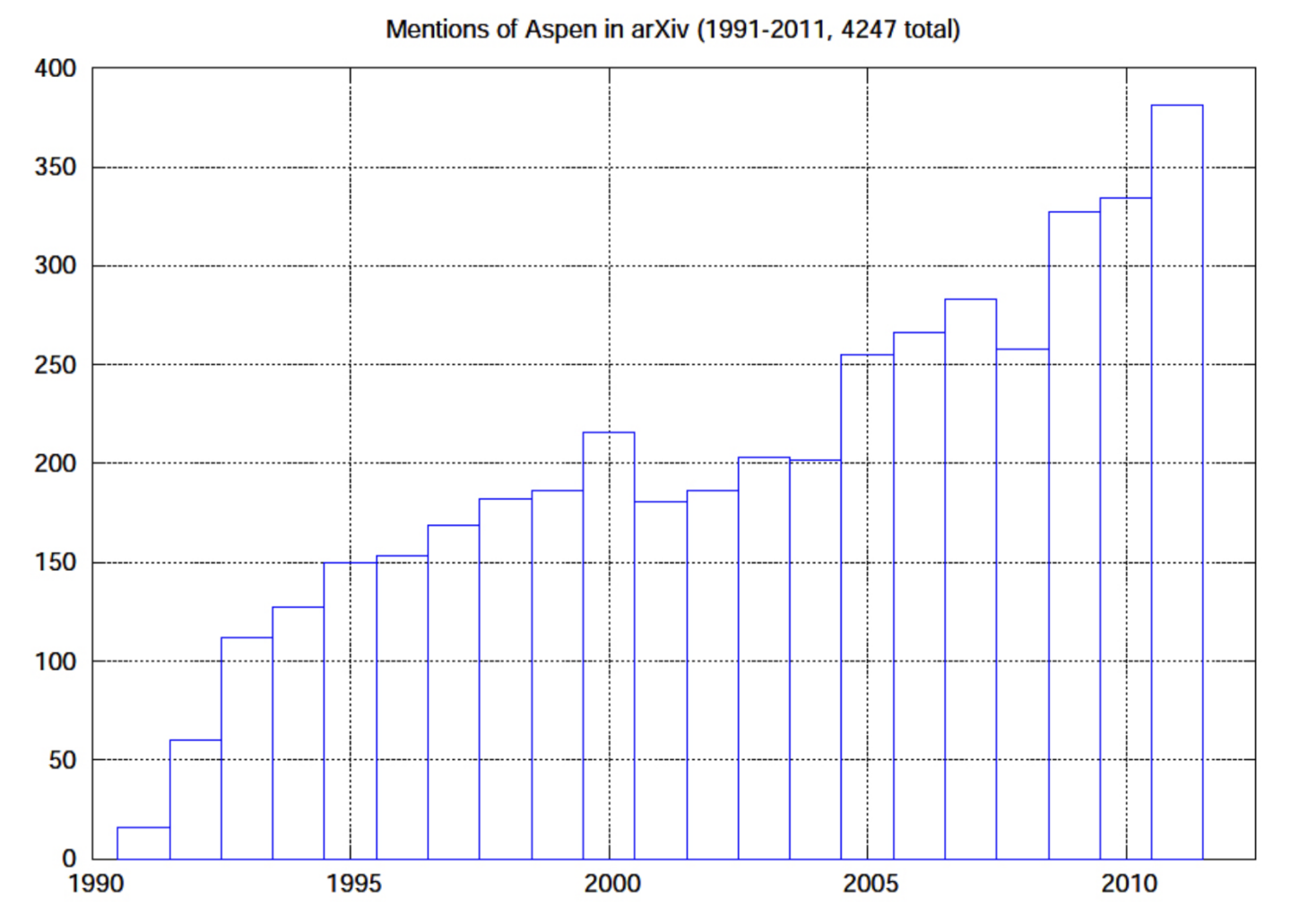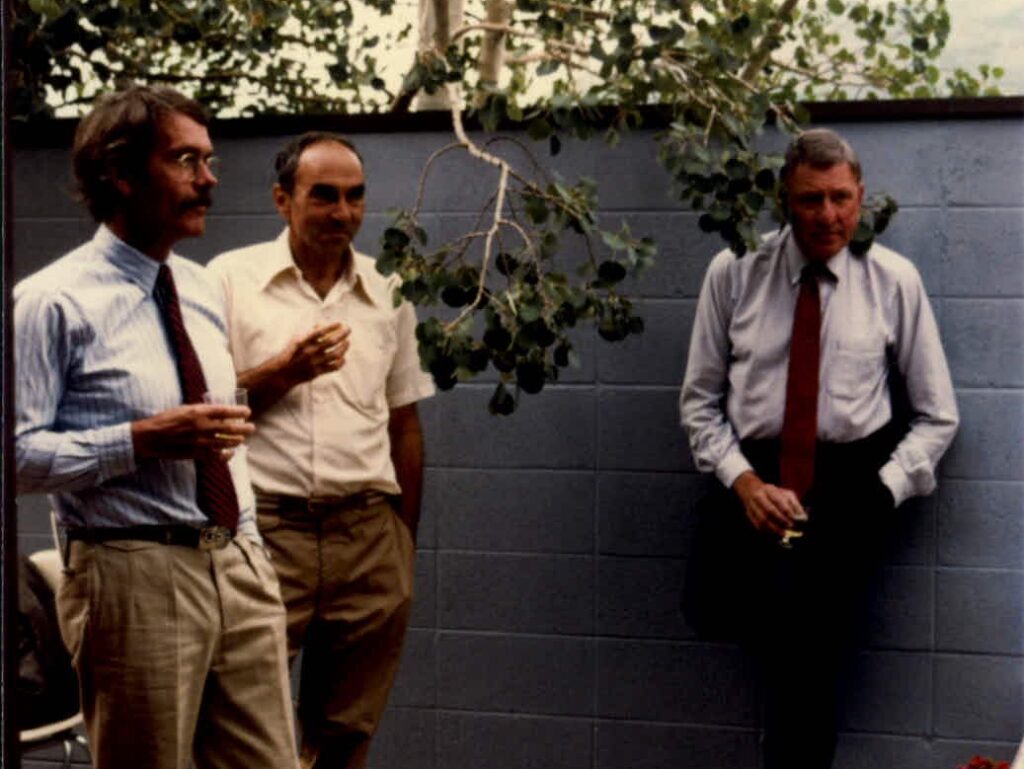Paul Ginsparg , Cornell University
My first visit to the ACP was during its 20th anniversary year of 1982 (I still have my “30th anniversary” t-shirt from 1991), one year after my doctorate. Enchanted by the mountains, the music, and the open exchange of ideas, I returned frequently during the following decades. This past summer (June 2011), I was fortunate to mark a different 20th anniversary with a talk at the ACP, commemorating the Aspen–based initiation of the resource now known as arXiv.org. For more details please visit: http://arxiv.org/abs/1108.2700.
Back in 1991, the ACP network connection to the outside world consisted of three terminals and modems in the satellite buildings owned by the Aspen Institute. There was email and FTP, but not yet a WorldWideWeb. Full texts of newly written articles had been circulating as TeX source for a couple of years via email lists. While sitting on the ACP benches eating lunch in late June 1991, a stray comment from a fellow physicist, concerned about emailed articles overrunning his disk allocation while traveling, suggested the creation of a centralized automated repository and alerting system, which would send only full texts only on demand (gee, what a concept…). I discussed the idea directly with the target audience over the next few days, conveniently assembled at the ACP. We collectively decided on features, chose a name for it, and I then worked out the basic software design. It went online as hep–th@xxx.lanl.gov a month later in Aug 1991, when I was back at my home institution.
While originally intended for about 100 submissions per year from a small subfield of high– energy particle physics, it rapidly grew in users and scope, receiving 400 submissions in its first half year. Renamed in late 1998 to arXiv.org, it has accumulated over 750,000 total submissions [Apr 2012], currently receives over 80,000 new submissions per year, and serves millions of full–text downloads to many hundreds of thousands of distinct users every week. It has become the primary means of exchanging new research information in many fields of physics, mathematics, computer science, and related areas, and also provides a source for many treatments in the popular press directed to the general public.
It was intended to expand on the Aspen methodology, by further democratizing the exchange of information. It also had an immediate impact on physicists in less–developed countries, who reported feeling finally in the loop, both for timely receipt of research ideas and for equitable reading of their own contributions. It has remained in the vanguard of a broader movement to transform scholarly communication, and it is exciting that many of the new methodologies being developed for academic use have their roots in the research atmosphere provided by the Aspen Center for Physics back in the early 90s.


Joanne Cohn Remembers Those Early Days
Paul Ginsparg and I were chatting outside on the lawn at the ACP during a 1991 summer workshop, about the international preprint collection and distribution list I had been running for about a year and a half. The preprints were filling up people’s emails––he suggested it should be automated, and I invited him to try. The next day he reported he’d just written some scripts to do this, and we worked out a transfer of my network to his planned system. A few months later the arXiv (at that point an ftp site) went live.



